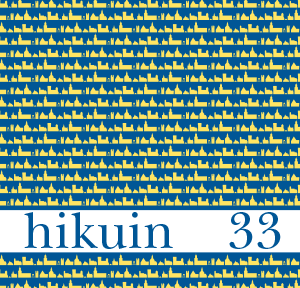S:t Eriks kapell i Uppsala
En preliminär och kort redogörelse för en arkeologisk undersökning 2004
Resumé
S:t Eriks Chapel in Uppsala
A preliminary and short report of an archaeological excavation 2004
By Ronnie Carlsson
In the summer of 2004 a small archaeological investigation was performed in Riddartorget, a little park just south of Uppsala cathedral. This was once the location of a chapel dedicated to the Swedish national saint Erik. Erik Jedvardsson, the Swedish king, possibly of English descent, was killed in 1160 by Magnus, a Danish pretender to the Swedish throne, in Östra Aros (now Uppsala). The chapel was presumably built on the execution place. The body was originally buried in (old) Uppsala, later put in a reliquary and together with the archbishops see and the name moved to Östra Aros, since then Uppsala. The earliest reference to the chapel is probably from 1278, and from the 1330ies or 1340ies there is a notion that Arnerus started to build the stone chapel witch means that the first building was a wooden one. The chapel was destroyed in fires and rebuilt but finally was tore down in the 18th century. Its exact location is known thanks to maps from the 17th century and the cellarium of the sacristy was discovered in the 1960’s. The excavation area was 3.5×7.5 m and the northern wall of the chapel was lying just under the surface. On the inside there was part of a vault pillar and on the outside a part of the corresponding buttress and also traces of a limestone socle. A thick layer of building rubble lied on both sides, a result of the tearing down in the 18th century. Among the rubble where several profile bricks from the vaults, which where added relatively late to the building if judged by the vault pillar’s stratigrafical relation to the main wall. The youngest remains consisted of small floor areas of bricklaying and preceding them were several floor related layers, but nothing of the actual floor, stones, floorboards or tiles had been left, only the filling layers. In general the excavation revealed relatively few artefacts. The most common find was iron nails, presumably mostly from coffins; the nails appeared together with scattered human skeletal remains in several filling layers. A heap of iron girdles was what was left of a treasure chest buried just inside the northern wall, but the content was missing. In the centre of the chapel a 1.5 × >1.5 m brick oven for heating, like a hypocaust, had been dug down under the floor level, probably during late medieval time. The excavation for the oven and the north wall had left very little of the earlier stratigrafy left, but what was left showed no signs of a wooden chapel nor did the layers look like they where deposited inside a chapel. Thus the conclusion that the wooden chapel was situated somewhere else though probably close by.
Referencer
Anund, Johan: Uppsala medeltida skola och kulturlager i domkyrkoområdet. Kvarteren Slottet, Oden, S:t Erik, Domen och Rosenberg, samt Riddartorget, universitetsparken, Fyris Torg, Gamla Torget och Valvgatan. Riksantikvarieämbetet, UV-Uppsala, rapport 1994:32. Uppsala 1994. ISSN 1104-8670.
Busser, Johan B: Utkast till beskrifning om Upsala. Uppsala 1773. Faksimilutgåva 1979.
DS = Diplomatarium Suecanum, utgivet av Riksarkivet genom Johan
Gustaf Liljegren, Bror Emil Hildebrand m fl. Stockholm 1829.
Erik den helige. Historia, kult, reliker. Redaktör Bengt Thordeman. Stockholm 1954.
Gezelius, Lars: S:t Eriks kyrka på Riddartorget i Uppsala. Meddelanden från Upplands fornminnesförening och hembygdsförbund 1983:2. LMV = Lantmäteriverket, Gävle.
Lovén, Christian: Erikskulten i Uppsala. Dubbelhelgonet och den långa stationsvägen. Uppland 2004, s 7-37.
Peringskiöld, Johan: Monumenta Ullerakerensia cum Upsalia nova illustrata eller Ulleråkers häradz minnings-merken med nya Upsala ... Stockholm 1719.
Pettersson, Karin: Riddartorget. Arkeologisk undersökning, Riddartorget, RAÄ 88, Uppsala, Uppland. RAÄ dnr 421-6489-1994. Riksantikvarieämbetet, arkeologiska undersökningar, UV Uppsala rapport.
Schefferus, Johannes: Upsalia. Uppsala 1666. (översättning Lars Garpe 1946, manuskript i Upplandsmuseets arkiv).
Downloads
Publiceret
Citation/Eksport
Nummer
Sektion
Licens
Forfatter og Forlag.





